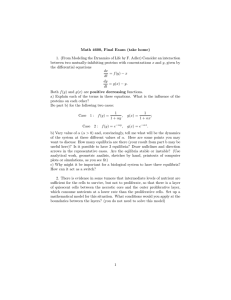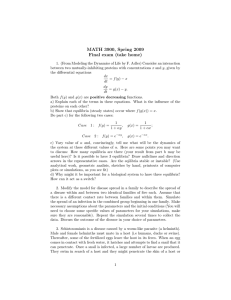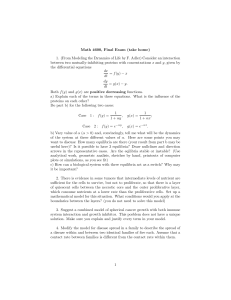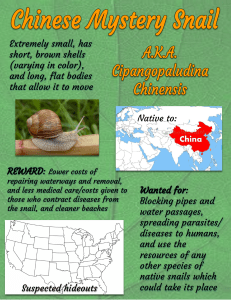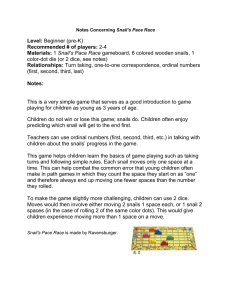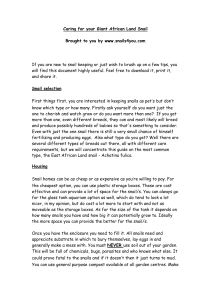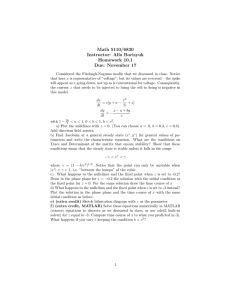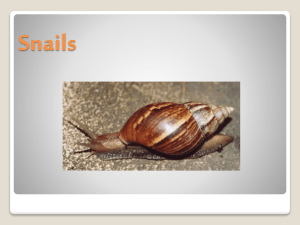Math 4600, Final Exam (take home)
advertisement
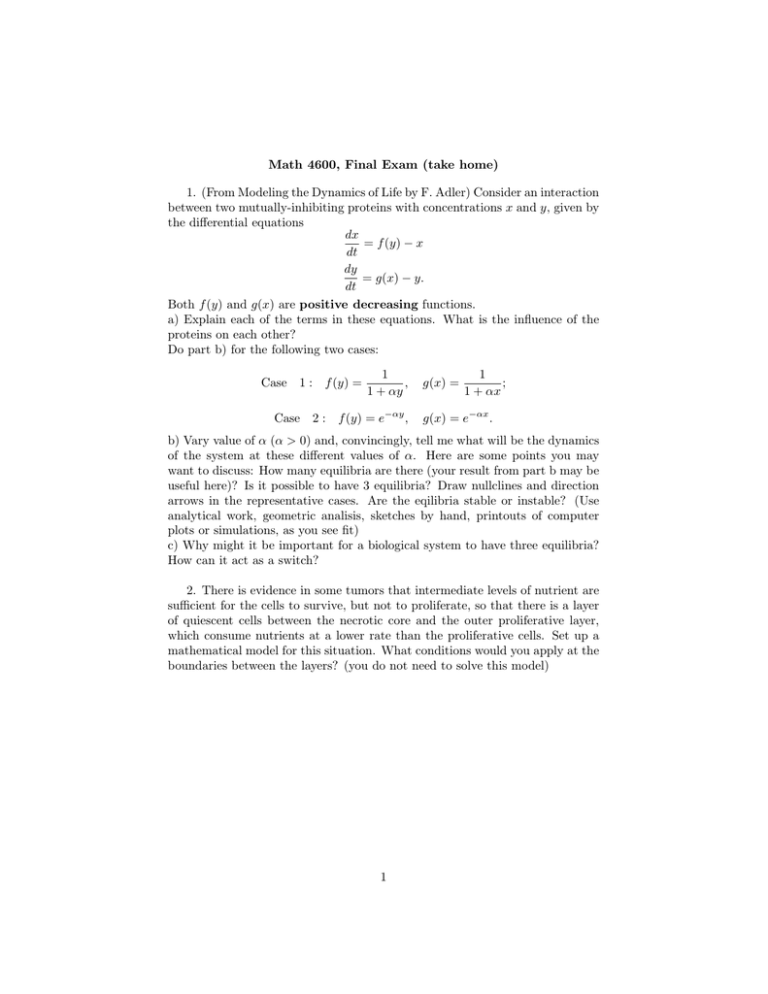
Math 4600, Final Exam (take home) 1. (From Modeling the Dynamics of Life by F. Adler) Consider an interaction between two mutually-inhibiting proteins with concentrations x and y, given by the differential equations dx = f (y) − x dt dy = g(x) − y. dt Both f (y) and g(x) are positive decreasing functions. a) Explain each of the terms in these equations. What is the influence of the proteins on each other? Do part b) for the following two cases: Case 1 : f (y) = Case 1 , 1 + αy 2 : f (y) = e−αy , g(x) = 1 ; 1 + αx g(x) = e−αx . b) Vary value of α (α > 0) and, convincingly, tell me what will be the dynamics of the system at these different values of α. Here are some points you may want to discuss: How many equilibria are there (your result from part b may be useful here)? Is it possible to have 3 equilibria? Draw nullclines and direction arrows in the representative cases. Are the eqilibria stable or instable? (Use analytical work, geometric analisis, sketches by hand, printouts of computer plots or simulations, as you see fit) c) Why might it be important for a biological system to have three equilibria? How can it act as a switch? 2. There is evidence in some tumors that intermediate levels of nutrient are sufficient for the cells to survive, but not to proliferate, so that there is a layer of quiescent cells between the necrotic core and the outer proliferative layer, which consume nutrients at a lower rate than the proliferative cells. Set up a mathematical model for this situation. What conditions would you apply at the boundaries between the layers? (you do not need to solve this model) 1 3. Schistosomiasis is a disease caused by a worm-like parasite (a helminth). Male and female helminths must mate in a host (i.e humans, ducks or swine). Thereafter, some of the fertilized eggs leave the host in its feces. When an egg comes in contact with fresh water, it hatches and attempts to find a snail that it can penetrate. Once a snail is infected, a large number of larvae are produced. They swim in search of a host and they might penetrate the skin of a host or be ingested with water or food grown in the water. The population is sampled at regular intervals. At every time interval n the average number of worms in each host Hn and the number of infected snails In are recorded. Then, Hn+1 = (1 − µ)Hn + cIn In+1 = (1 − δ)In + b (S − In )Hn2 , 1 + Hn where S is the total number of snails (fixed), bHn2 /(1 + Hn ) gives the mean number of paired worms per host, i.e. is proportional to the number of eggs produced, so the last term gives the interaction between eggs and susceptible snails. a) Explain what µ, δ and c mean in the model b) One of the steady states of the system is (0,0). Use computer simulation to decide whether the zero steady state is stable. Use the following parameter values: µ = 0.5, c = 10, δ = 0.3, b = 1, S = 150. d) If Hn is fixed Hn = H the system reduces to one equaion for In . Find steady states and analize their stability with cobwebbing. 4. Modify the model for disease spread in a family to describe the spread of a disease within and between two identical families of five each. Assume that there is a different contact rate between families and within them. 2
